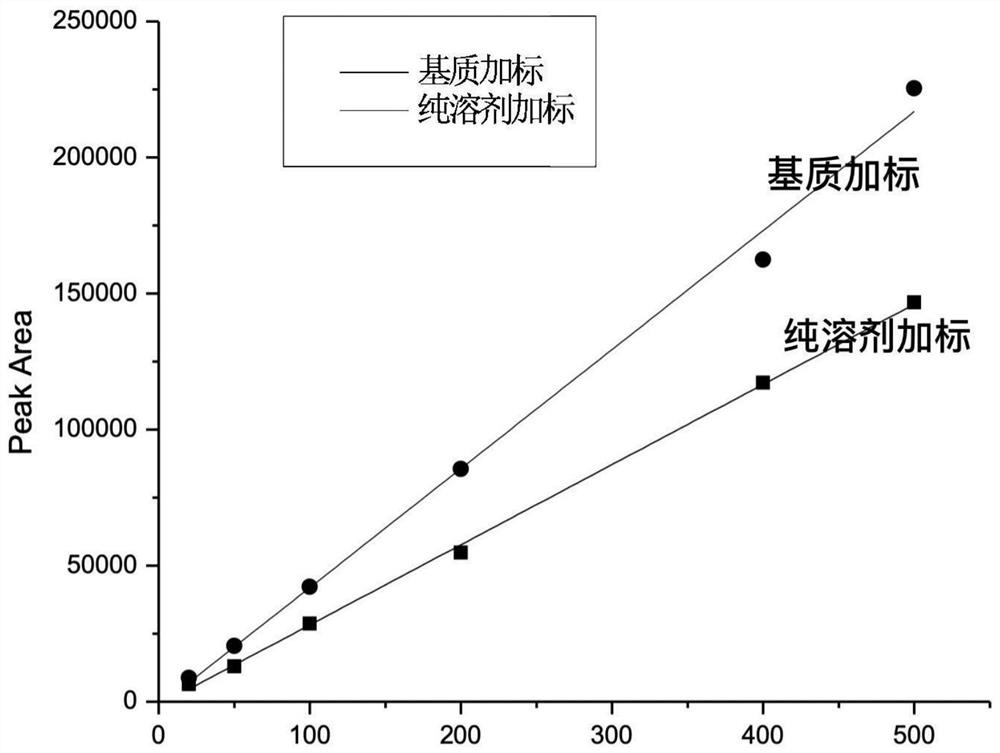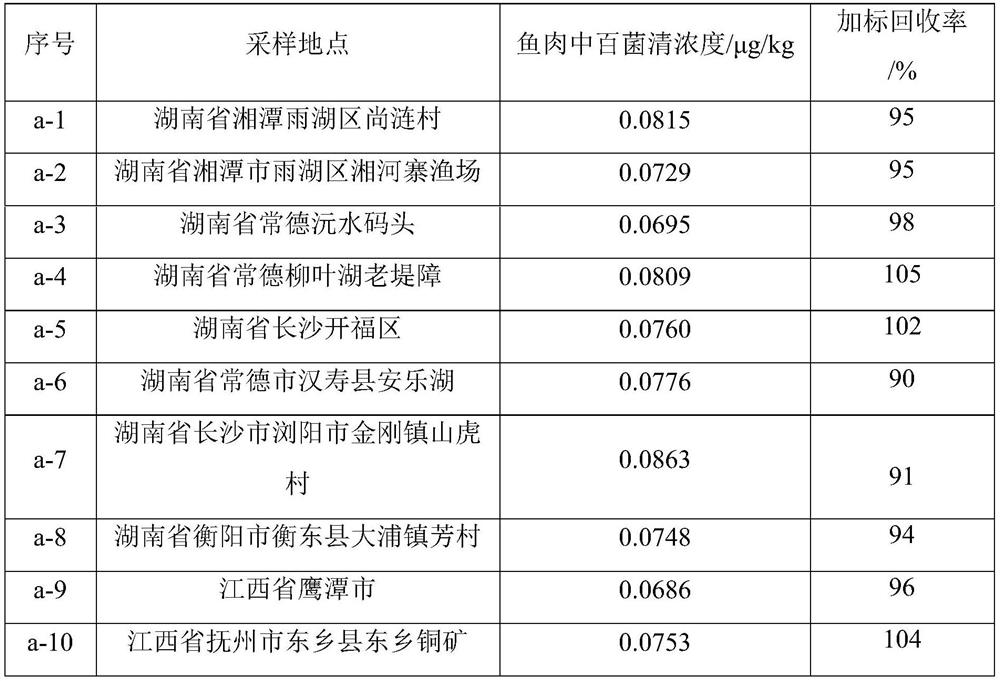Detection and analysis method of chlorothalonil residues in aquatic animal tissues
An aquatic animal, chlorothalonil technology, applied in the field of detection, can solve the problem of high detection limit, improve stability and recovery, improve detection sensitivity and accuracy, and optimize the effect of chromatography
- Summary
- Abstract
- Description
- Claims
- Application Information
AI Technical Summary
Problems solved by technology
Method used
Image
Examples
Embodiment 1
[0081] Embodiment 1: Fish tissue
[0082] From the fish caught in the sampling waters (carp is selected in this embodiment), take its fish tissue, weigh 5.0g of fish sample and 10mL of protease into polypropylene centrifuge tube 1, adjust the pH to 7.5, and use 300W power ultrasonic After 30 minutes, vortex for 1 minute and let stand for 30 minutes.
[0083] Add 10mL acetic acid solution with a volume fraction of 1% acetonitrile to a 50mL centrifuge tube, preheat for 5min, keep the extraction temperature at 70°C, and extract steadily for 5min; vortex for 1min, add 0.5g NaAc, 2g anhydrous MgSO 4 , vortex for 1 min, shake on a shaker for 15 min, centrifuge at 5000 rpm for 5 min, take out most of the extract with a syringe, and after taking out the extract, add 1% acetic acid acetonitrile solution to centrifuge tube 1 again, preheat for 5 min, and keep extracting Temperature 70°C, steady extraction for 5 minutes; vortex for 1 minute, shake for 15 minutes, centrifuge at 5000rpm f...
Embodiment 2-6
[0093] Compared with Example 1, the only difference is that 10mL acetic acid volume fraction of 1% acetonitrile solution is replaced by acetic acid volume fraction of 0% acetonitrile solution, acetic acid volume fraction of 2% acetonitrile solution, acetic acid volume fraction of 3% acetonitrile solution, the volume fraction of acetic acid is 4% acetonitrile solution, and the volume fraction of acetic acid is 5% acetonitrile solution.
[0094] The detection limit of Examples 2-6 is 0.012 μg / L.
Embodiment 7
[0096] Compared with Example 1, the only difference is that "0.5g NaAc, 2g anhydrous MgSO 4 " was replaced with "1g NaAc, 1.5g anhydrous MgSO 4 ".
[0097] In this example, the detection limit is 0.012 μg / L.
PUM
 Login to View More
Login to View More Abstract
Description
Claims
Application Information
 Login to View More
Login to View More - R&D
- Intellectual Property
- Life Sciences
- Materials
- Tech Scout
- Unparalleled Data Quality
- Higher Quality Content
- 60% Fewer Hallucinations
Browse by: Latest US Patents, China's latest patents, Technical Efficacy Thesaurus, Application Domain, Technology Topic, Popular Technical Reports.
© 2025 PatSnap. All rights reserved.Legal|Privacy policy|Modern Slavery Act Transparency Statement|Sitemap|About US| Contact US: help@patsnap.com



